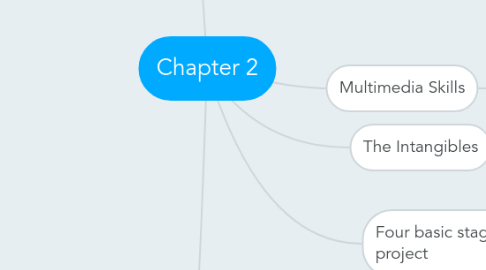Chapter 2
por Francis Tan


1. Hardware
1.1. Production platforms -The most significant platforms for producing and delivering multimedia projects are the Macintosh operating system and Microsoft Windows.
1.2. Windows vs. Macintosh -The Microsoft Windows operating system can run on assemblages of hardware from countless manufacturers.
1.3. Connections -Integrated Drive Electronics (IDE) -Universal Serial Bus (USB) -FireWire (IEEE 1394)
1.4. IDE -Is a standard interface for connecting a motherboard to storage devices such as hard drives and CD-ROM/DVD drives.
1.5. USB (Universal Serial Bus) -Most popular connection used to connect a computer to devices such as digital cameras, printers, scanners, and external hard drives.
1.6. FireWire -Introduced by Apple in the 1980s -For connecting devices to personal computer. -Provides a single plug-and-socket connection on which up to 63 devices
1.7. Memory and storage devices -Sufficient memory must be allocated for storing and archiving files.
1.7.1. -Flash or thumb drives -CD-ROM -DVD -Blu-ray discs -Hard disks -RAM -ROM
1.8. Input devices -An optical character recognition (OCR) device is used to convert printed matter into ASCII text files. -Barcode reader recognize the numeric characters of the Universal Product Code (UPC) -Voice recognition systems recognize spoken words and commands. -Microphones -Digital cameras
1.9. Output devices Stereo Monitor Projector Printer
1.10. OCR software -Makes use of probability and expert system algorithms.
1.11. Painting tools allow you to create and modify bitmap images. -Photoshop, Fireworks, and Painter are examples.
1.11.1. -Photoshop, Fireworks, and Painter.
1.12. Drawing tools allow you to create and modify vector graphics. CorelDraw, Illustrator, and Canvas are examples.
1.12.1. CorelDraw, Illustrator, and Canvas.
1.13. Painting and drawing software features include: -An intuitive graphical user interface
1.14. 3-D modeling tools allow rendering of objects in a three-dimensional perspective.
1.14.1. VectorWorks, AutoDesk Maya, and Strata 3D
1.15. Image editing tools -Powerful tools for enhancing retouching, blurring, sharpening, lightening existing bitmapped images.
1.16. Sound editing tools -Cut, copy, paste, and edit certain segments of the music
1.17. Animation, video, and digital movie tools
2. Authoring Systems
2.1. An authoring tool is a software package which allow developers to : -Organize and edit the multimedia elements of multimedia project.
2.2. Types of authoring tools
2.2.1. Card- and page-based authoring tools
2.2.2. Icon- and object-based authoring tools
2.2.3. Time-based authoring tools

